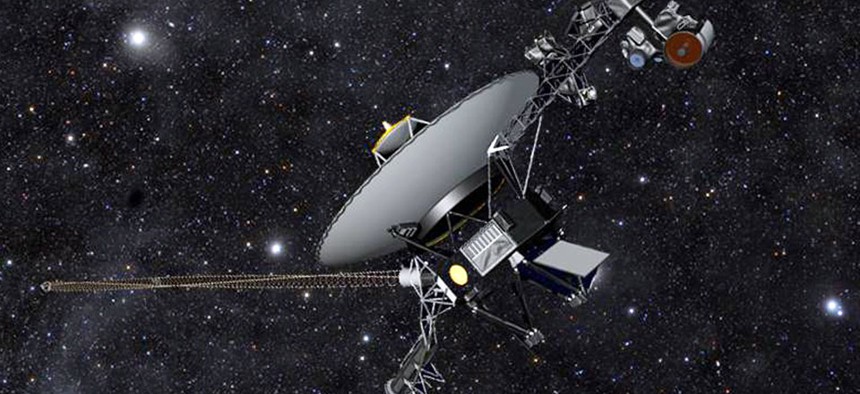Why Voyager 1's Entrance Into Interstellar Space Is Such a Big Deal

This artist rendering hows NASA’s Voyager 1 spacecraft barreling through space. NASA/AP
One small step for a NASA spaceship is one giant leap for mankind.
This afternoon, NASA made a big announcement: Its Voyager 1 spacecraft, launched from Earth 36 years ago, has entered interstellar space. Nerds the world over -- your correspondent included -- proceeded to freak out. This is big.
But why, you ask, does it matter that Voyager 1 is no longer, in the most meaningful way possible, with us? Why should we care that some chunk of metal tooling around millions of miles away from Earth is now sliiiiightly farther from us than it was before?
Because the now-starship Voyager's move into interstellar space represents the passage of a significant benchmark in the annals of human history. It may not be quite Columbus- or Wright- or Armstrong-level in the leap forward it represents, but it's certainly following in those explorers' footsteps as a human accomplishment. We are now, via Voyager, in a new space within space. We have never traveled this far before. One small step for a spaceship is one giant leap for mankind.
"It's the farthest thing we've ever sent anywhere," says Neil DeGrasse Tyson in the video above. "Dad would be enormously proud," Nick Sagan, Carl Sagan's son, explains, adding: "It's a great celebration. It's an enormous accomplishment." "We are boldly going," LeVar Burton says, "where no one has gone before."
Or as Wil Wheaton, unofficial king of the nerds of Earth, sums it up: "This is awesome."
NEXT STORY: Video: What Is Reddit?





